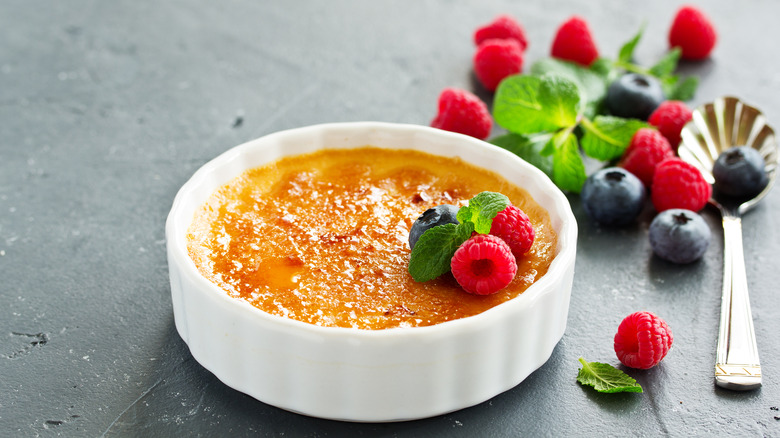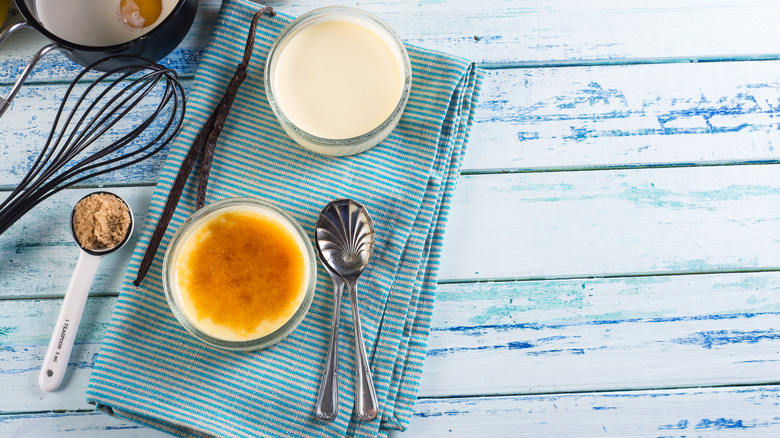What Happens If You Overbeat Crème Brûlée?
Crème brûlée is an elegant cream-based custard made by whisking together heavy cream, sugar, salt, and egg yolk, with a hint of vanilla or other flavoring, per Escoffier Online. The resulting emulsification is gently heated until it sets to the consistency of Greek yogurt, as ThermoWorks puts it. Then, just before serving, the surface is dusted with additional sugar and flash-caramelized into delicate sugar-spun glass. Indulging in crème brûlée traditionally involves cracking that surface with the back of a spoon and enjoying a shard or two with that first spoonful of the ultra-soft custard that lays beneath.
While many crème brûlée aspirants spend quite a bit of energy focusing on how best to develop that meltingly sweet yet crunchy caramel crust (Spoiler alert: it's not by subjecting your custard ramekins to our oven's broiler setting), that part is relatively easy when compared with the potential drama of emulsifying hot eggs and cream.
Emulsification requires some level of agitation, according to American Egg Board, but the issue often comes down to just how much agitation is called for, especially for crème brûlée. As you might suspect, if you underwhelm your custard mixture with subpar whisking, it literally won't come together. But overbeating your crème brûlée comes with its own set of risks.
Fortunately, we've got a virtually foolproof method for beating your crème brûlée just the right amount.
Overbeating crème brûlée compromises texture
What distinguishes crème brûlée from other custards is its unique, velvety-smooth texture. Unlike flan, the crème beneath the caramel shouldn't jiggle; Unlike clafoutis, there's no place for airiness or texture, except for that crunchy top surface. First and foremost, attaining a uniformly textured crème brûlée requires gentle heating, although anyone who's ever cooked literally anything using eggs might have already guessed that. What many may not be aware of, however, is that it also demands restraint — from overbeating.
As MasterClass explains, beating the custard mixture requires only just enough vigor to "fully incorporate" its ingredients. The problem is that, somewhat counterintuitively, the inherent risk of curdling has been known to inspire many a cook to overbeating their custard. But overbeating won't prevent curdling. Instead, try whisking the eggs and sugar together, just until thick and pale, per Foodal, and then do as The New York Times recommends, which is allowing the cream to cool slightly before stirring it — not beating it — into the egg mixture. And then: No more agitation — except to the extent required by pouring the custard through a sieve into ramekins.
Alternatively, if you're open to sous viding your crème brûlée, you can simply whisk all your ingredients together — while cold — before divvying into mason jars, according to Anova Culinary. Then, follow your sous vide machine's directions for gentle heating.

